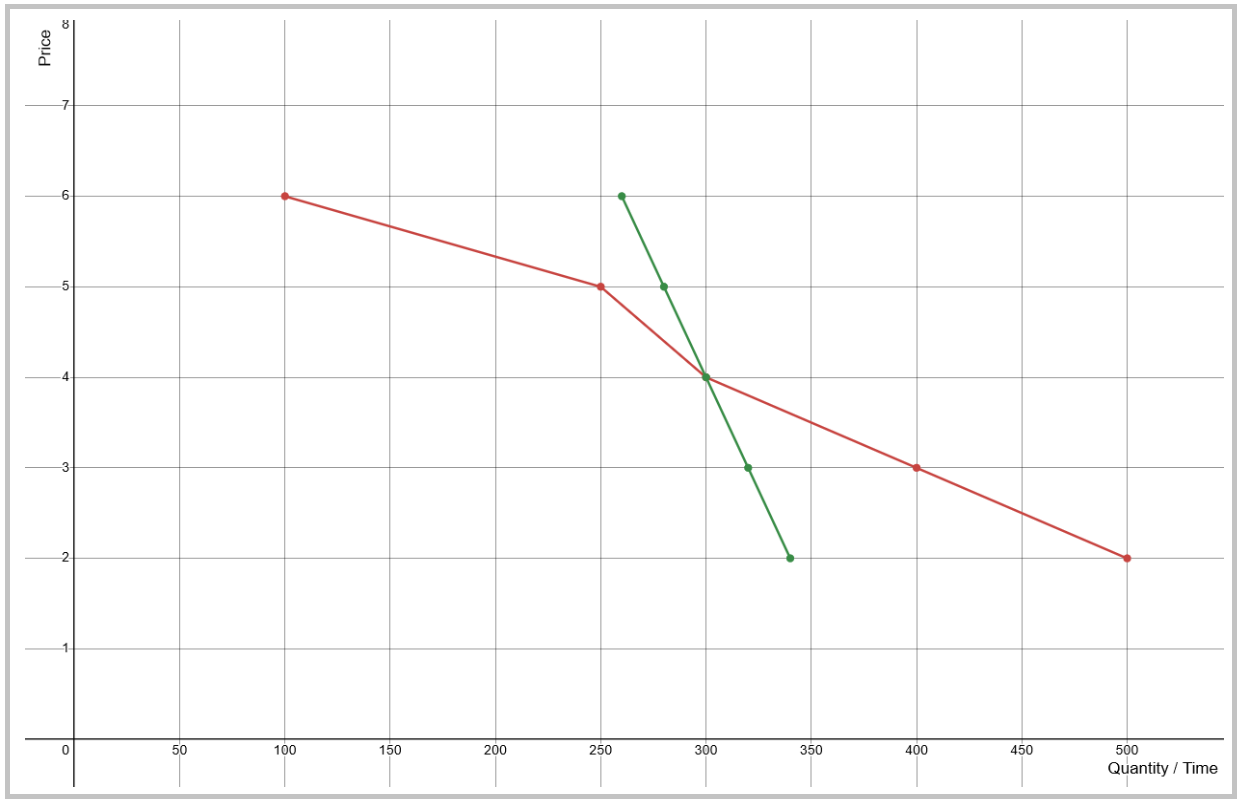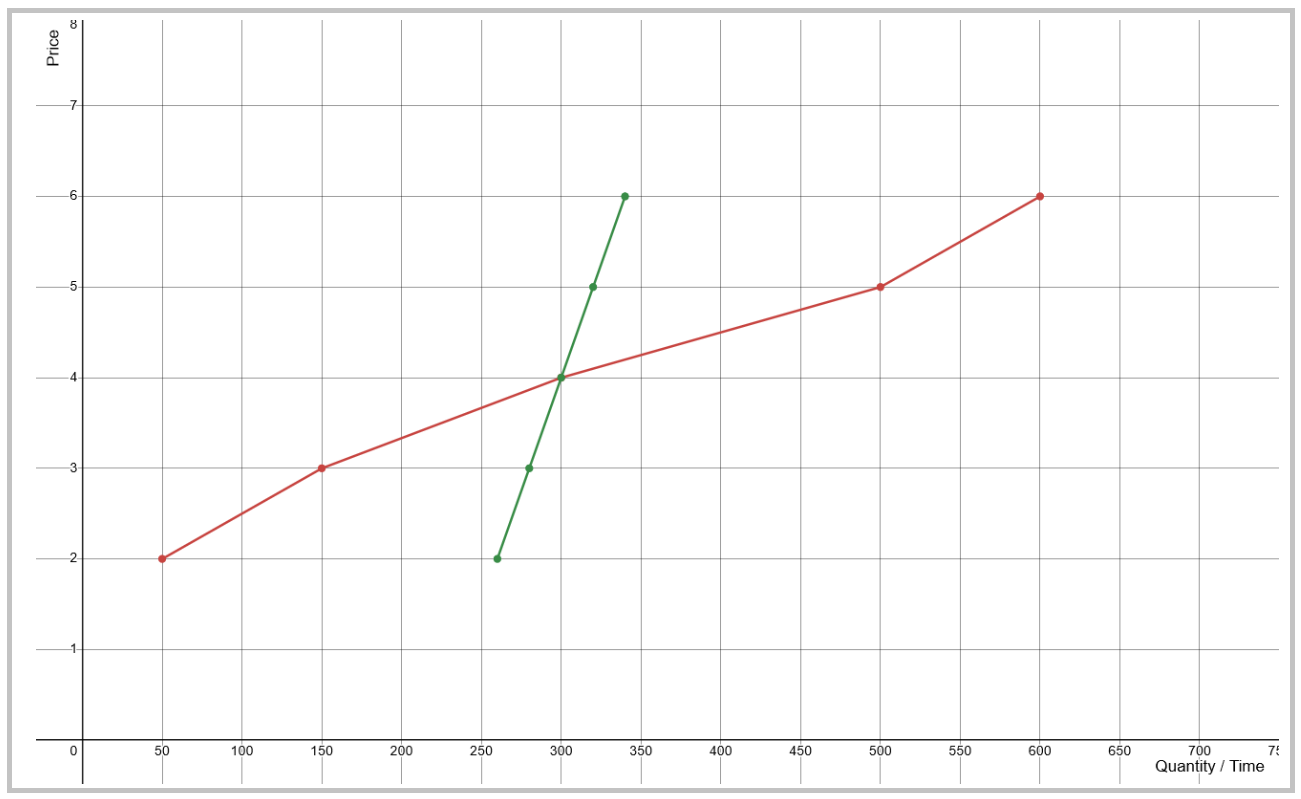Elasticity
Why Should I Care?
The way markets work depends on how people react to changes. If people keep buying a product, even if the price increases, then market prices might not come back down as quickly. And consumers might get mad because they might feel trapped or manipulated.
This Lecture Has 2 Parts
- Price-Elasticity of Demand
- Price-Elasticity of Supply
What is Elasticity?
The term elasticity is a metaphor used to explain price-sensitivity on markets. This sensitivity determines if people keep buying or selling a product in the same quantities, even if the price changes. It really matters for consumers and producers because there are always changes in the economy, so elasticity determines how markets actually adapt to a disruption of regular business activity. Elasticity was first modelled by Alfred Marshall in his landmark textbook on Economics.
-
Price-Elasticity of Demand
Economists look at the price sensitivity of buyers, and call that the price-elasticity of demand, or shorthand elasticity of demand. This matters to business people because if demand is said to be inelastic, that means consumers will keep buying the product even if the price has increased. In this situation, demand is said to be pent-up, and the demand curve will be quite steep if not vertical.
Why would people keep buying if the price increases?
The reason is that they are attached in some way to this product. A good example is gasoline. You can't use peanut oil in your car, or propane, or kerosene. If you drive for work, or to work, then you have no choice. The absence of an alternative solution is main reason for inelastic demand.
If there is an alternative, you will substitute out of the high-price product, and use the other option instead. In this case, an increase in price, would be accompanied by a dramatic decrease in quantity demanded. This is called elastic demand, which is no fun for producers.
If demand is inelastic, there is a business argument for producers to collude and act as a monopolistic cartel, because a price increase will multiply their profits tremendously. This situation is obviously unfair and frustrating for consumers. But it is very profitable for investors. It's basically the heart of Warren Buffett's value investment strategy.
Graph - Comparing Elastic and Inelastic Demand Curves
As you can see on the graph, the inelastic demand curve (green) is steeper than the 'elastic' demand curve (red). A free market price might be 4 dollars, with quantities of 300 per week, and sales of 1,200$.
If the industrial structure is that of a monopoly on the supply side, the producer would stand to make more money. How much money depends on the elasticity of demand.
In the event of an elastic demand curve (red), an increase in price to 5 dollars, would see production reduced to 250 tubs per week, which is something the producer would agree with easily. Sales would increase to 1,250$.
In the event of an inelastic demand curve (green), an increase in price to 5 dollars, would see production reduced only slightly to 280 tubs per week. Sales would increase to 1,400$, which the producer would much appreciate.
The example gets more extreme if the price increases to 6$. With elastic demand, revenues drop by half to 600$, as quantity demanded drops to 100 tubs per week. With inelastic demand, revenues increase again to 1,560$, as quantity demanded remains strong at 260 tubs per week.
Use the coordinates to draw rectangles representing the sales (P x Q), and compare their areas. The larger the rectangle, the more sales.
Table - Comparing Elastic and Inelastic Demand Schedules
| Situation | Price ($/tub) |
Qd elastic (t/w) |
Potential Spending | Qd inelastic (t/w) | Potential Spending |
| A | 6 | 100 | 600 | 260 | 1,560 |
| B | 5 | 250 | 1,250 | 280 | 1,400 |
| C | 4 | 300 | 1,200 | 300 | 1,200 |
| D | 3 | 400 | 1,200 | 320 | 960 |
| E | 2 | 500 | 1,000 | 340 | 680 |
Elasticity also has an effect on the time it takes to adjust prices. In an elastic market, producers have to bring prices back to equilibrium quickly, or else the total sales of the industry decrease by important values. In an inelastic environment, producers may get away with higher prices for longer periods.
-
Price-Elasticity of Supply
Economists look at the price sensitivity of sellers, and call that the price-elasticity of supply, or shorthand elasticity of supply. This matters to business people because if supply is said to be inelastic, that means producers can't increase production very much, if ever they wanted to. In this situation, supply is said to be pent-up, and the supply curve will be forward-sloping, but quite steep if not vertical.
Graph - Comparing Elastic and Inelastic Supply Curves
Why can't suppliers increase production if the price increases?
The reason is that they are limited in their ability to change the scale of production quickly. If you have optimized your industry to produce at a certain pace, you may not be able to slow things down, or increase the pace, at a moment's notice. Imagine a giant with clay feet.
The consequence is the possibility for important variations in price, both on the way up, and down, in relation to changes in demand. Imagine if the demand curve were to shift left. The intersect with the red line would entail a small decrease in price, and a large decrease in quantities. However, the intersect with the green line (inelastic supply) would entail a large decrease in price, and a small decrease in quantities.
If the industry is elastic (red), it is able to adapt to changes in quantities demanded, and the price won't fluctuate as much.
If the industry is inelastic (green), it is not able to adapt to changes in quantities demanded, and the price will fluctuate much more.
Table - Comparing Elastic and Inelastic Supply Schedules
| Situation | Price ($/tub) | Supply Elastic (t/w) |
Potential Sales ($/w) |
Supply Inelastic (t/w) | Potential Sales ($/w) |
| A | 6 | 600 | 3,600 | 340 | 2,040 |
| B | 5 | 500 | 2,500 | 320 | 1,600 |
| C | 4 | 300 | 1,200 | 300 | 1,200 |
| D | 3 | 150 | 450 | 280 | 840 |
| E | 2 | 50 | 100 | 260 | 520 |
As you can see in the table above, the market equilibrium remains unchanged, no matter if the supply curve is elastic or not. What changes is the market response to disruptions. Also consider that if industry conditions are inelastic, this means that the industry is mature in its product development and technology. It is producing near its largest possible scale. This is typically the kind of industry that wishes to consolidate to reduce competition on markets and give itself a change to boost revenues. If the demand-side is also quite inelastic, the opportunity to benefit from a monopoly strategy are even greater.
Is inelastic supply the same as the limits to capacity?
If the demand curve would shift to the right, on more demand, you could associate a pent-up supply curve to the situation where producers hit the limits of their systems of production. This happens for most industry, except where there are unlimited economies of scale.
If your oven can bake 12 pies at a time, you can't make 13. As producers make more and more goods and services, they run out of the best resources, and eventually they just run out of inputs. The limits of production, the boundaries of the economic system, are the main reason for inelastic demand.
This is the case with production bottle-necks happening in the world economy since the COVID-19 pandemic. You can't get a boat to unload on the dock of the port of Shanghai, if there are already hundreds of boats waiting their turn. Congestion in the input markets has slowed production of complex goods all over the world. Same goes for oil and gas. You can't produce gasoline if there are no more wells to pump.
There are industries however where supply can literally be almost unlimited. Think of streaming services, such as Spotify, or Netflix. The cost of reproducing a song is extremely low and the service can usually be able to add streamers almost indefinitely. These companies would have inelastic supply curves.



No Comments